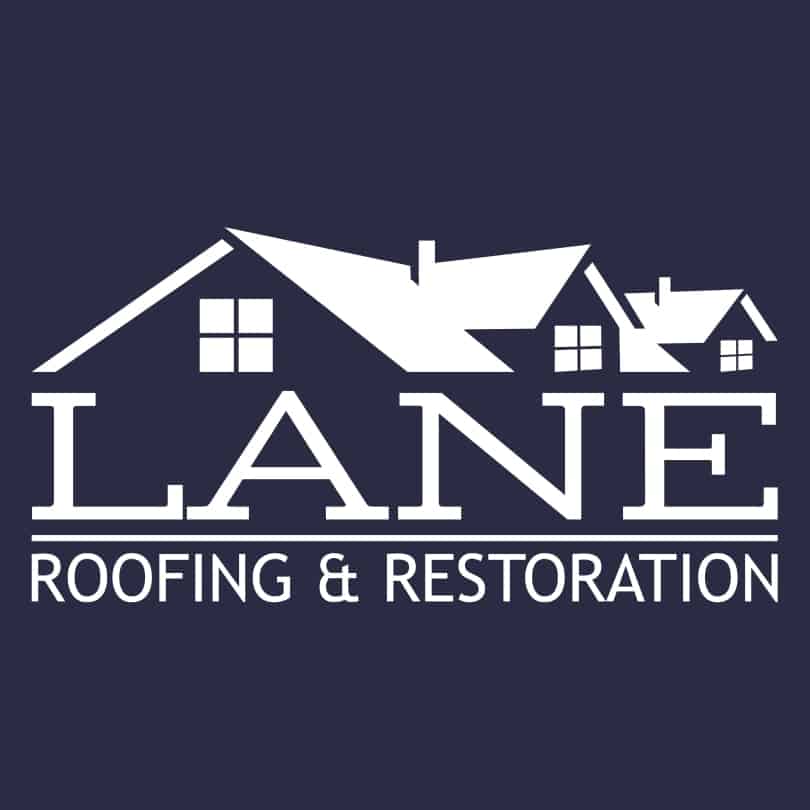When it comes to protecting your Asheville home from the elements, the quality of your roof isn’t just about the materials used—it’s about the craftsmanship behind the installation. Here in Western North Carolina, where we experience everything from summer thunderstorms to winter ice, knowing how to identify quality roofing work isn’t just helpful—it’s essential for your home’s longevity. Exploring various roofing solutions can lead you to discover the benefits of metal roofing options in Asheville, which provide durability and resistance against harsh weather conditions. Investing in a roof that suits the regional climate not only safeguards your home but can also enhance its overall value. By selecting high-quality materials and skilled professionals, you ensure your roof will withstand the test of time, keeping your home safe and secure.
As we navigate the winding roads of the Blue Ridge Mountains, we at Lane Roofing and Restoration have seen firsthand how proper installation makes all the difference between a roof that lasts decades and one that needs premature replacement. The unique climate challenges of our mountain region demand roofing excellence that stands up to our local weather patterns.
Many homeowners struggle to evaluate roofing work because much of what makes a quality roof is hidden from view or requires technical knowledge. This guide will equip you with the insider knowledge to spot the hallmarks of superior craftsmanship—whether you’re evaluating current work, considering a contractor for future projects, or simply want to understand what sets exceptional roofing apart in our Asheville community.
Visual Indicators of Quality Roofing Craftsmanship
Quality roofing reveals itself through consistent, clean installation that catches the eye even from street level. When examining a roof from the ground, look for straight, even lines across the entire surface. Shingles should align perfectly with uniform exposure (the portion of each shingle visible after installation), creating clean horizontal lines across your roof.
Color consistency matters too. A properly installed roof shows even coloration without patchy areas or noticeable variations. This uniformity isn’t just about aesthetics—it indicates materials were handled properly and installed with care.
The roof edges tell their own story about craftsmanship. Examine the eaves and rakes (the lower and side edges of your roof) for clean, straight lines. Quality roofers take special care with these highly visible areas, ensuring proper alignment that enhances your home’s curb appeal while providing proper water runoff.
For our Asheville homes with multiple roof planes and dormers, the transitions between these areas should appear seamless. Valleys—where two roof planes meet—should have neat, straight lines with properly overlapped materials. These intersection points are critical for waterproofing and reveal much about the installer’s attention to detail.
The Importance of Proper Shingle Installation
In Western North Carolina’s variable climate, proper shingle nailing is non-negotiable. Quality roofing work includes nails placed in the manufacturer’s designated nailing zone—not too high, not too low, and not exposed to the elements. Improper nailing can void warranties and lead to shingle blow-offs during our mountain wind storms.
Look closely at shingle pattern consistency. Professional roofers follow proper offset patterns between courses (rows) of shingles, typically staggering them 4-6 inches. This staggering prevents water from finding a direct path through your roof. When shingles line up too closely between rows, it creates vulnerability to leaks—a particular concern during our heavy Asheville downpours.
The cutouts between shingles should align properly without obvious pattern repeats. This careful alignment isn’t just visually pleasing—it’s functional design that prevents water intrusion while maintaining the roof’s structural integrity.
For homes near the Asheville city limits or in more exposed mountain locations, proper overhang at the eaves (typically 1-1.5 inches) provides crucial protection for your fascia boards and helps direct water into gutters rather than allowing it to run behind them.
Flashing Details: Where Mastery Shows
Some of the most telling signs of quality craftsmanship appear where your roof meets other structures. Properly installed step flashing—the L-shaped metal pieces used where the roof meets a wall—should be visible at consistent intervals, with each piece overlapping the one below it.
Chimney flashing deserves special attention. Quality work includes a proper base flashing that tucks under the shingles, counter flashing embedded in the chimney mortar joints, and properly sealed corners. Given Asheville’s seasonal freeze-thaw cycles, proper chimney flashing is particularly important for preventing winter water damage.
Pipe boots—the flashing around plumbing vents—should fit snugly with no gaps or excessive sealant. They should be properly shingled over, with the top portion covered by shingles and the bottom overlapping the shingles below. In the higher elevations around Asheville, where UV exposure is intensified, quality pipe boots can prevent premature deterioration.
The roof’s peak requires proper ridge cap shingles—specialized pieces that bend over the ridge while maintaining water resistance. These should be evenly installed with consistent exposure, not just regular shingles bent over the peak as some less experienced roofers might do.
Ventilation: The Hidden Factor in Roof Performance
A properly ventilated attic space is crucial for roof longevity in our Western North Carolina climate, where summer humidity and winter cold create challenging conditions. Quality roofers ensure balanced ventilation with intake vents (usually at the eaves) and exhaust vents (near or at the ridge).
Ridge vents should run continuously along the roof’s peak with no gaps or unsealed ends. These specialized vents allow hot air to escape while maintaining a water-resistant barrier. When combined with properly installed soffit vents, they create continuous airflow that helps regulate temperature and moisture levels in your attic.
Bathroom and kitchen exhaust fans should vent directly outside, not into the attic space. Venting moisture-laden air into the attic can lead to mold and wood rot—particularly problematic in our humid Asheville summers. Quality roofing work includes proper connection and sealing of these exhaust outlets.
For homes in mountainous areas around Asheville, where snow can sometimes accumulate, proper ventilation helps prevent ice dams by keeping the roof deck at a consistent temperature. This is why knowledgeable local roofers pay special attention to ventilation details that might be less critical in other regions.
Clean Installation and Site Management
While not directly related to roof performance, job site cleanliness reflects a contractor’s overall professionalism and attention to detail. Quality roofers protect your property during installation with tarps to catch debris and take measures to protect landscaping, siding, and windows.
After completion, thorough cleanup includes magnetic sweeping for nails—essential for protecting vehicle tires and bare feet. All roofing debris should be completely removed, not left in flowerbeds or shrubs. Given Asheville’s commitment to environmental sustainability, responsible contractors will properly dispose of or recycle old roofing materials.
Gutters should be cleaned out after roofing work is completed. Granules from new shingles naturally shed into gutters during installation, and professional roofers ensure these are removed to prevent clogging and water overflow.
Quality roofers also inspect adjacent areas like siding and windows after completion to ensure no damage occurred during the roofing process. This thoroughness reflects the comprehensive care that experienced Western North Carolina roofers bring to their projects.
Documentation and Warranties
Beyond the physical installation, quality roofing work comes with proper documentation. This includes detailed contracts, manufacturer warranty information, and workmanship warranties. Professional roofers provide clear information about what’s covered, for how long, and what might void these protections.
For Asheville homeowners, having proper permits and documentation is particularly important when homes change hands. Our real estate market values homes with documented quality improvements, and having proper roofing records can make a significant difference during home inspections.
Quality roofers also provide maintenance recommendations specific to our Western North Carolina climate. They’ll advise on seasonal checks, cleaning protocols, and when professional inspections might be needed—especially after major storms that frequently affect our mountain region. By staying proactive with these maintenance tips, homeowners can extend the lifespan of their roofs and avoid costly repairs. Furthermore, consulting with western north carolina roofing experts can provide additional insights tailored to local weather patterns and environmental factors. Their expertise ensures that your roof remains resilient against the unique challenges posed by the mountainous terrain and fluctuating temperatures.
A comprehensive final inspection should be conducted and documented. This serves as a baseline for your roof’s condition and provides evidence of completed work meeting both local building codes and manufacturer specifications—crucial for both warranty claims and your peace of mind.
Red Flags: Warning Signs of Poor Craftsmanship
Knowing what quality looks like also means recognizing warning signs of substandard work. Excessive use of roofing cement or caulk often indicates improper flashing installation or attempts to fix mistakes. While sealants have their place in roofing, they should never be the primary waterproofing method.
Misaligned or crooked shingles are immediately visible red flags. Straight lines matter in roofing, and wavy or uneven patterns indicate careless installation that may compromise performance during Asheville’s heavy rain events.
Reused or mismatched flashing materials suggest corner-cutting. Quality roofers use new, properly sized flashing components throughout the project rather than attempting to repurpose old, weathered materials that may fail prematurely.
Exposed nails are particularly problematic in our freeze-thaw climate. Any visible nail heads on the roof surface create potential water entry points and should be properly sealed or, ideally, not exposed at all in the finished installation.
Finding Quality Craftsmanship in Asheville
For Asheville homeowners seeking quality roofing work, start by asking for local references—specifically from projects completed 2-3 years ago. This timeframe allows any installation issues to become apparent while still being recent enough to reflect current practices.
Request to see examples of completed work, particularly on homes similar to yours in the Western North Carolina area. Reputable contractors will gladly share photos or even arrange visits to past projects where possible.
Verify proper licensing and insurance specific to North Carolina requirements. Quality contractors maintain appropriate credentials and carry insurance that protects both their workers and your property throughout the project.
Consider contractors with manufacturer certifications. These indicate specialized training and allow the contractor to offer enhanced warranty options that may be particularly valuable given our region’s weather challenges.
The Value of Quality Craftsmanship
Quality roofing craftsmanship might come with a higher initial investment, but it delivers tremendous long-term value for Asheville homeowners. A properly installed roof typically lasts years longer than one with substandard installation, effectively lowering your annual cost of ownership. Moreover, quality roofing materials often come with extensive warranties, ensuring peace of mind and reducing future repair costs. When considering the longevity and durability, the roi of quality roofing becomes evident, as it minimizes the need for frequent replacements and upkeep. Ultimately, investing in a well-crafted roof not only enhances your home’s aesthetic appeal but also contributes to its overall value over time.
Superior installation also means fewer repairs and maintenance issues over time. This is particularly important in our mountain region, where accessing and repairing roofs on steep terrain or during winter months can be challenging and costly.
From an energy efficiency standpoint, properly installed roofing and ventilation help maintain consistent indoor temperatures year-round. This translates to lower heating and cooling costs—significant benefits during both our cool mountain winters and warm summer months.
Perhaps most importantly, quality craftsmanship provides peace of mind. Knowing your home is protected by skilled work allows you to focus on enjoying Asheville’s natural beauty and vibrant community rather than worrying about potential roofing problems during every storm.
Your home deserves the protection that only comes from quality roofing craftsmanship. By understanding what makes exceptional work stand out, you’re better equipped to make informed decisions about one of your home’s most critical components. Whether you’re evaluating current work or planning future projects, this knowledge helps ensure your Western North Carolina home stays protected for years to come.

